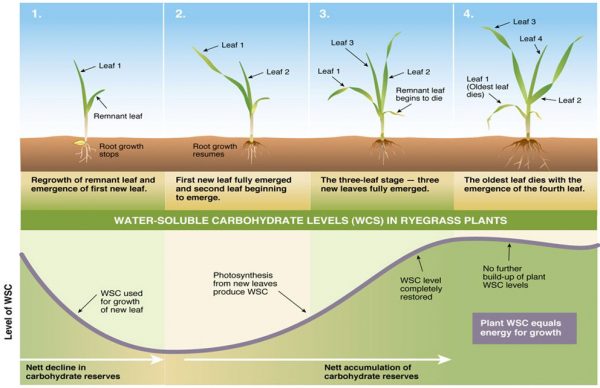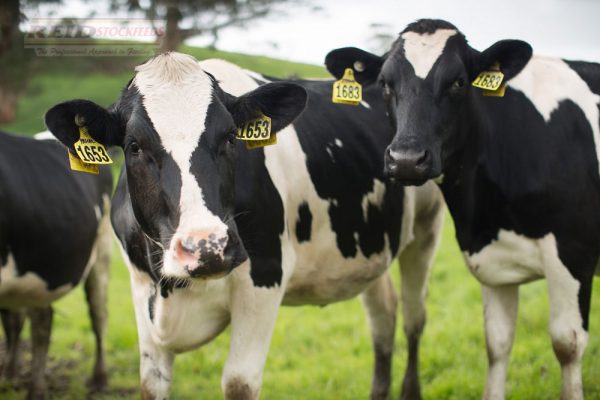Understanding pasture quality
It requires a high degree of planning, discipline, management and sometimes luck to maintain a rotation long enough to allow pastures to fully recover and be grazed correctly. Even then, if you have a high stocking rate or are inundated with water there is no guarantee that you can grow enough pasture quickly to fully replace the amount of pasture your cows are eating. Options such as hay and silage fed alongside crushed grain or pellets are available to fill any gaps in the pasture availability.
We must think about nutrient balance in the rumen to maintain healthy cows. Well-fed healthy cows produce good levels of milk and get pregnant again when we need them to. Fibre is required for firm dung, protein for cell division and cell reproduction and abundant carbohydrates are needed to provide the energy required for all the cows daily milk supply. Nutritionists talk a lot about carbohydrates (sugars and starch). Pasture plants provide mainly sugars (Water Soluble Carbohydrates) and grains provide mainly starch.
Looking at the diagram below, grasses use up their store of water-soluble carbohydrates (W.S.C.) to stimulate new growth and recovery after grazing. The sugar (W.S.C.) level in grasses remains low until time and sunlight (photosynthesis) restore sugar levels at the three-leaf stage. This is another reason why slowing down your rotation rates, and grazing pastures at an appropriate height is good for milk production and pasture growth. Grazing too short and too early is like eating a half-baked cake.

By following the pasture “S” curve, you not only maximise the amount of pasture on offer, but you also maximise the quality of that pasture. Every agricultural student gets taught that the breed and size of the cow are the most important predeterminants of their ability to produce milk. It is true that bigger cows can eat more food and well-bred cows have a higher percentage of food that ends up in the milk vat than on her body. It is also true that its 10% breed and 90% feed. Cows with a full belly of high sugar 3-4 leaf stage ryegrass will always produce more milk than cows with a half full belly of low sugar 2-3 leaf stage ryegrass. Most things that make money cost money. Thankfully strip wires and pigtail pegs are cheap.
Source: EverGraze: The Nuts and Bolts of Grazing Management >
